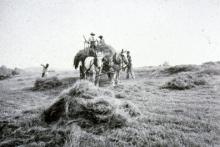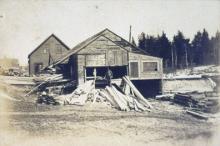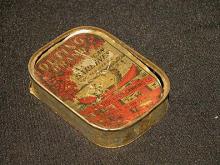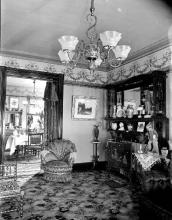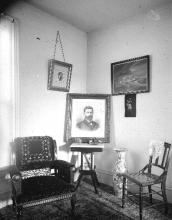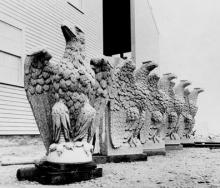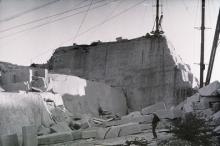Nineteenth Century Coastal Maine

After the American Revolution there was a large influx of people into Maine. In 1790, when the first federal census was taken, half of the people in the District of Maine lived west of the Androscoggin River.
Between the end of the Revolution and the time Maine became a state in 1820, almost 200 new towns were founded. Maine’s population in 1820 was nearly 300,000, concentrated along the southern coast. From 1800 to 1850 Maine’s population nearly quadrupled, and until 1830 Maine grew at a rate faster than the national average.
In the years between 1845 and 1896, 19 new states joined the Union, all but two west of the Mississippi. The attraction of the American west and the 1863 completion of the transcontinental railroad affected Maine’s population, which declined in the decade after the Civil War. Between 1850 and 2000, Maine’s population did not even triple.
In nineteenth century maritime communities occupations revolved around the sea. Some workers built ships and loaded them; some sailed to domestic and foreign destinations. Shipbuilding required carpentersCarpenter ship's carpenter
In merchant sailing days, a petty officer responsible for maintenance of all the ship's boats, spars, masts, hull, and fixed rigging; also responsible for plugging any shot holes with special wooden plugs. The ship's carpenter is often nicknamed 'Chips.' A carpenter or ship's carpenter can work in a shipyard also, building vessels., joinersJoiner joinery
A carpenter who finishes interior woodwork. Joinery is the interior woodwork., riggersRigging
The term for all ropes, wires, or chains used in ships and smaller vessels to support the masts and yards (standing rigging) and for hoisting, lowering, or trimming sails to the wind (running rigging.) Running rigging lines move through blocks and are not wormed, parceled, or served., sailmakersSailmaker
One who makes and assembles canvas articles used on ships and boats, such as sails, awnings, and covers. He attaches ropes and metal fittings to the canvas. On sailing vessels he was assisted by a sailmaker's mate, and was in charge of the upkeep of sails. He did not keep watch and was quartered with the carpenter and carpenter's mate., and caulkersCaulk caulking, corking
To drive oakum or cotton into the seams of a vessel's deck or sides, to make it watertight. After the oakum is driven in with a caulking iron or mallet, the seam is "payed" or coated with hot pitch or other compound to prevent the oakum from rotting. . CoopersCooper
One who makes casks and barrels for oil, water, wine, or other liquid and solid materials. In Penobscot Bay, coopers made thousands of casks for the lime trade. Also, a dock-worker who takes care of repairs or reconditioning to damaged packages or cases. made barrels for carrying trade products, and farmers supplied food for the towns and for the voyage.
Mariners learned their trade through on-board experiences. In midcoast Maine, master mariners commanded vessels for shipowners in New York, Boston, and other large cities. In 1880, Searsport sea captains made up 10% of the merchant vessel masters in the United States.
Fishing, however, occupied more coastal Mainers than any other single pursuit. By 1860, Maine had more full-time commercial fishermen than any other state – 21% of the national total. OffshoreOffshore
In fisheries, fishing conducted futher than 3 miles from land. These generally require larger vessels for overnight passages and work. fisheries were the primary employer in 32 Maine coast towns. Fishing was supported by canning and smoking operations employing men, women, and children.
Homes
Traditional New England homes in Maine’s maritime communities reflected the money earned by master mariners and shipbuilders. Maine captains in the deepwater merchant trade often brought back furniture, fabrics, and artwork from around the world and from larger U.S.cities to furnish their homes. Itinerant artists painted murals, silhouettes, miniatures, and portraits. Ship portraitsShip portrait
Marine painting featuring an accurate depiction of a vessel, usually commissioned by the owner or captain. were commonly hung in the homes of captains and shipbuilders.
Travel
Maritime communities offered their citizens more opportunities to travel as passengers to other states and to foreign countries on packet shipsPacket
A vessel traveling on a regular schedule between two ports for the carriage of mail, goods, and passengers.. The first steamerSteamer steamboat,steamship
A mechanically-propelled vessel in which the principal motive power is steam, as opposed to a sailing vessel or motorship. Steamboats traditionally were the sometimes sizable coastal steamers, while steamship referred to ocean going vessels. began operation in 1816, opening up the Penobscot and Kennebec Rivers. It was possible to travel easily from Bangor down to Boston and to visit towns in between.
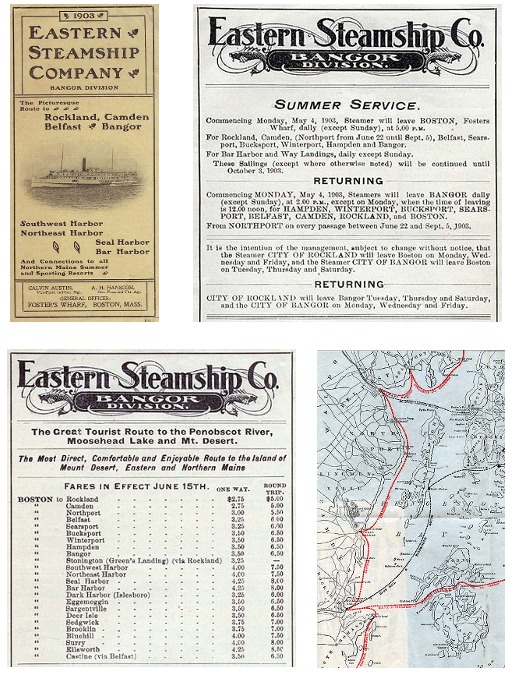
Island Communities
Many islands in Penobscot Bay were sources of granite that was quarried, carved, and shipped by water to large cities. Between 1820 and 1930 granite was the primary industry on Vinalhaven, Maine’s largest island, and Vinalhaven’s year-round population was twice what it is today. Cutters, polishers, and shapers came from throughout the United States and from Britain, Italy, and Scandinavia to work the stone. Dix Island, now uninhabited, had a population of nearly 2,000 people. After 1900, however, use of newer construction materials caused the granite industry to die out. Fishing too was a way of life on the islands of Penobscot Bay, until the decimation of the fish populations. Now, lobstering has taken its place.

